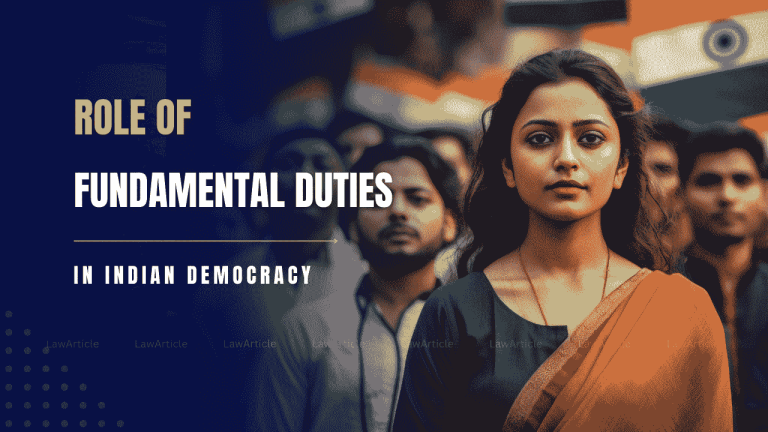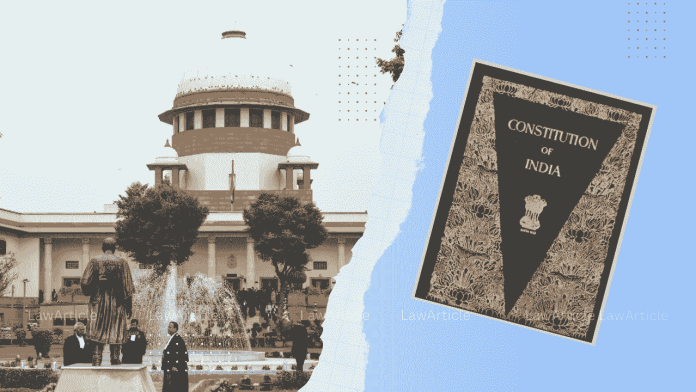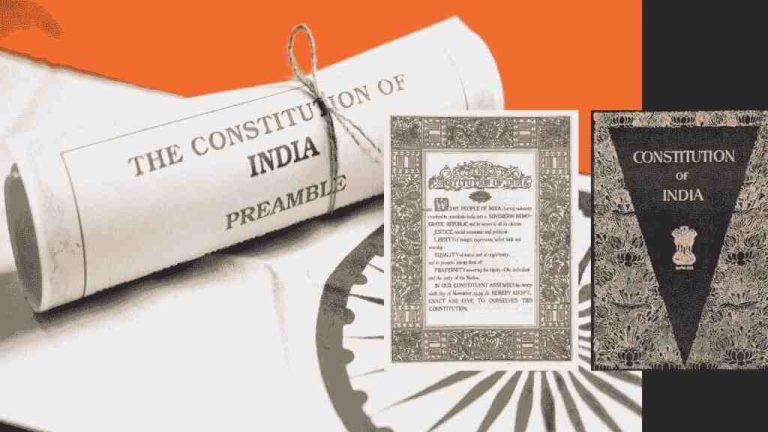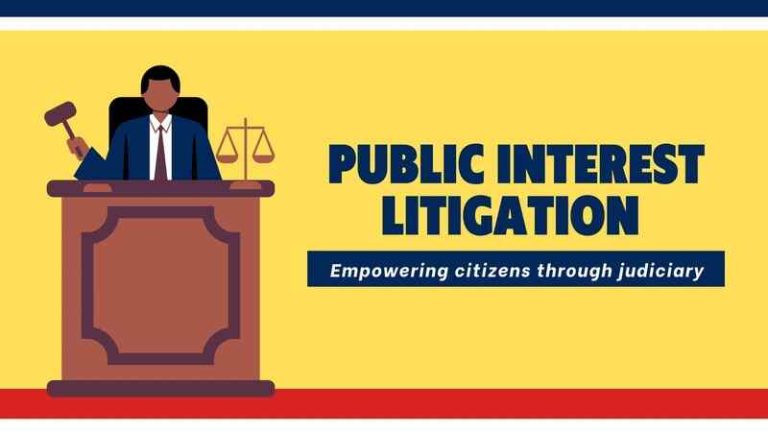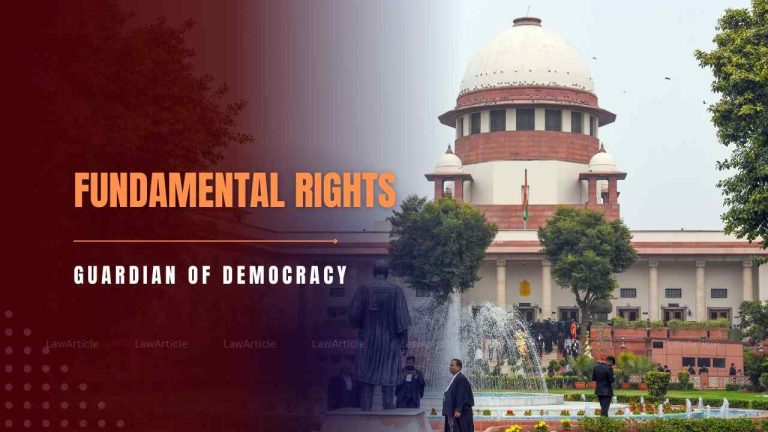Introduction
The emergency provisions in the Indian Constitution are a powerful set of mechanisms designed to ensure the nation’s stability and security during extraordinary circumstances. These provisions, detailed in Part XVIII (Articles 352-360), empower the central government to act decisively in times of crisis, such as war, external aggression, armed rebellion, financial instability, or a failure of constitutional machinery in a state. While crucial for maintaining order, these provisions have been subject to significant debate due to their potential for misuse. This article explores the detailed framework of these emergency provisions, the safeguards built into the Constitution to prevent abuse, and the controversies that have arisen from their application.
Types of Emergencies
National Emergency (Article 352)
A National Emergency is a significant measure designed to protect India during severe threats. It can be declared by the President of India based on the written recommendation of the Cabinet in situations of war, external aggression, or armed rebellion. Initially valid for one month, the proclamation must be approved by both Houses of Parliament to continue. It can be extended indefinitely with Parliamentary approval every six months. During a National Emergency, the central government assumes extensive powers, the federal structure is temporarily altered, and certain fundamental rights (excluding Articles 20 and 21) may be suspended.
- Conditions: Can be declared on grounds of war, external aggression, or armed rebellion.
- Procedure: Requires the President to proclaim an emergency based on the written recommendation of the Cabinet.
- Duration and Approval: Initially valid for one month, it must be approved by both Houses of Parliament to continue. It can be extended indefinitely with Parliamentary approval every six months.
- Effects: The central government assumes sweeping powers, the federal structure is temporarily altered, and certain fundamental rights (excluding Articles 20 and 21) may be suspended.
President’s Rule (Article 356)
President’s Rule addresses situations where there is a failure of constitutional machinery in a state. The President can proclaim this emergency based on a report from the Governor of the state or otherwise. Initially valid for six months, it can be extended up to three years with Parliamentary approval every six months. Under the President’s Rule, the President assumes the functions of the state government, and the state legislature is either dissolved or suspended.
- Conditions: Invoked when there is a failure of the constitutional machinery in a state.
- Procedure: Proclaimed by the President upon receipt of a report from the Governor of the state or otherwise.
- Duration and Approval: Initially valid for six months, it can be extended for up to three years with Parliamentary approval every six months.
- Effects: The President assumes the functions of the state government, and the state legislature is either dissolved or suspended.
Financial Emergency (Article 360)
A Financial Emergency can be declared by the President if there is a threat to the financial stability or credit of India or any part thereof. This proclamation remains in force indefinitely until revoked by the President and requires repeated approval from Parliament every two months. During a Financial Emergency, the central government can direct the reduction of salaries and allowances of all government officials and require all financial and money bills passed by state legislatures to be approved by the President.
- Conditions: Proclaimed if the President believes that the financial stability or credit of India or any part thereof is threatened.
- Procedure: Proclaimed by the President.
- Duration and Approval: Remain in force indefinitely until revoked by the President, with repeated approval required from Parliament every two months.
- Effects: The central government can direct the reduction of salaries and allowances of all government officials and requires all financial and money bills passed by state legislatures to be approved by the President.
Effects of Emergency Provisions
Suspension of Fundamental Rights
Fundamental rights, especially those under Articles 19 (freedom of speech and expression) and 21 (protection of life and personal liberty), can be suspended. The infamous 1975-77 Emergency saw widespread curtailment of civil liberties, including censorship of the press and the detention of political opponents without trial. The power of judicial review can be suspended, limiting the judiciary’s ability to intervene and protect individual rights during an emergency
During a National Emergency in India, the fundamental rights guaranteed under Article 19, such as freedom of speech and expression, assembly, and movement, can be suspended. This is authorized under Articles 358 and 359 of the Constitution. Article 358 allows the automatic suspension of Article 19 rights during an Emergency declared on grounds of war or external aggression, while Article 359 enables the President to suspend the right to seek judicial enforcement of other fundamental rights, excluding Articles 20 and 21. These suspensions are intended to empower the government to act decisively in times of crisis but have been controversial, especially given the historical misuse during the 1975-77 Emergency, leading to significant restrictions on civil liberties.
Impact on Democratic Processes
- Elections and Political Activity: During an emergency, elections can be postponed, and political activities can be restricted. The 1975-77 Emergency saw the suspension of general elections and the curtailment of opposition activities, which undermined democratic processes and institutions.
- Governance and Administration: The executive branch gains extraordinary powers to implement policies and maintain order, often at the cost of transparency and accountability.
Economic Consequences
Financial Emergency would grant the central government the power to reduce salaries and allowances of all government officials, including those at the state level, and require all financial and money bills passed by state legislatures to be approved by the President. This could centralize financial control and impact economic stability and governance at the state level.
Safeguards
Parliamentary Oversight
- Approval and Extension: Any emergency proclamation must be approved by both Houses of Parliament within one month. Subsequent extensions require parliamentary approval every six months, ensuring periodic review and accountability.
- Revocation: The Lok Sabha can revoke a National Emergency by passing a resolution, providing a democratic check on executive power.
Judicial Review
- Supreme Court and High Courts: These courts have the power to review the validity of an emergency proclamation. In the landmark case of
Minerva Mills Ltd. v. Union of India (1980)
- Facts: This case challenged the constitutionality of certain amendments made during the Emergency period.
- Issue: Whether the amendments to the Constitution that curtailed judicial review and expanded the scope of emergency powers were valid.
- Judgment: The Supreme Court reaffirmed the basic structure doctrine established in Kesavananda Bharati and held that amendments that destroy or damage the basic structure of the Constitution are invalid.
- Significance: This case reinforced judicial review as part of the basic structure, ensuring that the proclamation of emergency and actions taken under it could be reviewed by the courts the Supreme Court reaffirmed that the proclamation of emergency is subject to judicial review.
Cabinet’s Written Recommendation
The Indian Constitution contains detailed provisions to handle emergencies, recognizing the necessity for the government to act swiftly and decisively in times of national crisis. Among the safeguards to prevent the misuse of these powers, the requirement for the Cabinet’s written recommendation stands as a crucial mechanism, particularly concerning the declaration of a National Emergency under Article 352. This requirement ensures a collective decision-making process, providing a vital check on executive power.
The Role of the Cabinet’s Written Recommendation
Constitutional Requirement:
- Article 352 stipulates that a National Emergency can only be declared by the President based on a written recommendation from the Cabinet. This provision was reinforced by the 44th Amendment Act of 1978, which aimed to curb the potential for arbitrary use of emergency powers.
- The term “Cabinet” here specifically refers to the Council of Ministers headed by the Prime Minister, ensuring that such a significant decision is made collectively rather than unilaterally
- Requires a written recommendation from the Cabinet, ensuring a collective decision rather than a unilateral presidential proclamation.
Process and Significance:
Collective Decision-Making: The requirement ensures that the decision to proclaim a National Emergency is taken after careful deliberation by the entire Cabinet, reflecting a consensus among the highest executive officials.
Accountability: A written recommendation holds the Cabinet collectively accountable for the decision, making it harder for any single individual to impose an emergency based on personal motives.
Transparency: This process promotes transparency within the executive branch, as the decision must be formally documented and based on concrete evidence and reasoning
44th Amendment Act (1978)
Pranab Mukherjee on the need for constitutional safeguards:
“The 44th Amendment was crucial in ensuring that such an assault on democracy, as witnessed during the Emergency, could never be repeated.”
- Protects Fundamental Rights: Articles 20 and 21 cannot be suspended even during a national emergency.
- Stricter Conditions: Made the proclamation and continuation of a national emergency more stringent.
- Context: This amendment was enacted in response to the abuses during the 1975-77 Emergency.
- Provisions: It introduced safeguards against the misuse of emergency provisions, including:
- Making the proclamation of emergency more stringent.
- Ensuring that the proclamation must be approved by the Cabinet in writing.
- Requiring that any extension beyond six months must be approved by Parliament every six months.
- Protecting the rights under Articles 20 and 21 from suspension during an emergency.
- Significance: The amendment strengthened the constitutional safeguards to prevent the misuse of emergency powers in the future.
Historical Instances and Controversies
1975-77 National Emergency
“I had to act because there was disorder, chaos, and disruption. The normal functioning of the government and the judiciary was paralyzed”- Indira Gandhi on the 1975 Emergency
Indira Nehru Gandhi v. Raj Narain (1975)
- Facts: Indira Gandhi’s election was declared void by the Allahabad High Court on charges of electoral malpractice. During the emergency, the government amended the Constitution to immunize the Prime Minister’s election from judicial review.
- Issue: The validity of the amendment and the imposition of emergency itself were in question.
- Judgment: The Supreme Court upheld the election laws’ amendment but stated that such changes should not alter the democratic fabric of the Constitution.
- Significance: This case illustrated the tensions between constitutional amendments made during an emergency and the principles of democratic governance.
- Background: Declared by Prime Minister Indira Gandhi on grounds of internal disturbance, it lasted for 21 months.
- Abuse of Power: Widely criticized for suppressing political dissent, curbing press freedom, and detaining political opponents without trial. This period highlighted the potential for abuse of emergency provisions to stifle democracy and civil liberties
Judicial Response:
ADM Jabalpur v. Shivkant Shukla (1976)
Justice H.R. Khanna (dissenting opinion in ADM Jabalpur v. Shivkant Shukla, 1976):
“What is at stake is the rule of law. The question is whether the law speaking through the authority of the courts shall be absolutely silenced and rendered mute.”
- Facts: The case Known as the Habeas Corpus case, arose during the 1975-77 Emergency declared by Prime Minister Indira Gandhi.
- Issue: The main issue was whether the right to move the courts for enforcement of fundamental rights could be suspended during an emergency.
- Judgment: The Supreme Court, by a majority, held that during an emergency, the right to seek judicial remedy for enforcement of fundamental rights (including habeas corpus) stands suspended case, also known as the Habeas Corpus case, saw the Supreme Court controversially upholding the suspension of fundamental rights during the emergency.
- Significance: This controversial judgment was widely criticized for undermining civil liberties. It was effectively overturned by the 44th Amendment Act, 1978, which ensured that Articles 20 and 21 (protection in respect of conviction for offenses and protection of life and personal liberty) cannot be suspended even during an emergency.
Frequent Use of President’s Rule
- Misuse: Often criticized for being used by central governments to dismiss state governments led by opposition parties.
- Judicial Intervention:
-
S.R. Bommai v. Union of India (1994)
- Facts: The case arose from the dismissal of several state governments under Article 356, which allows for President’s Rule in states.
- Issue: The issue was the scope of judicial review over the President’s proclamation of emergency and the use of Article 356.
- Judgment: The Supreme Court held that the President’s proclamation under Article 356 is subject to judicial review. It also laid down guidelines for the imposition of the President’s Rule to prevent its misuse case established that the imposition of the President’s Rule is subject to judicial review, and the Court can reinstate the dismissed state government if found to be done arbitrarily.
- Significance: The judgment was a significant check on the arbitrary use of emergency powers and reinforced federalism by protecting state governments from undue dismissal.
Lack of Safeguards for Financial Emergency
- Concerns: Although a Financial Emergency has never been declared, the extensive control it grants the central government over state finances raises concerns about its potential for abuse and the impact on state autonomy
Conclusion
The emergency provisions in the Indian Constitution are vital for managing extraordinary situations and maintaining national stability. However, their invocation has significant effects, including the centralization of power, suspension of fundamental rights, and impact on democratic processes. The historical misuse of these provisions, particularly during the 1975-77 Emergency, underscores the importance of robust safeguards to prevent abuse. The judiciary’s role in upholding constitutional principles and the amendments aimed at enhancing these safeguards are crucial in balancing the need for emergency powers with the protection of democracy and civil liberties. Ensuring these provisions are used judiciously remains a critical challenge for India’s governance framework. The ongoing challenge lies in ensuring these provisions are used judiciously, maintaining a balance between national security and individual freedoms
“The resilience of a democracy is tested not by the calm of normalcy but by the storms of emergency. India’s past reminds us that the true strength of a nation lies in safeguarding freedoms even when facing the fiercest gales”.
Also Read:
Rights of undertrial prisoners in India
How To Send A Legal Notice In India



